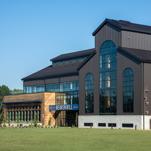Checklist: Tallinn, Estonia
Photo below via Getty by Jordan MansfieldEstonia’s population falls well below the population of the city of Philadelphia. So, on an early morning walk through Tallinn, the country’s capital, curtained by a gray mist off the Baltic Sea, the quiet feels entirely unsurprising.
But it doesn’t take long to dissolve. As the day starts, the cobblestone streets of Tallinn’s old city slowly fill with tourists, locals, and an outpouring of delicious food and medieval history. What’s more, the prices are extremely low for a European capital city; a full breakfast will often cost no more than five euros, and a decent beer about three.
Though Tallinn’s history reeks of invading powers like Russia, Germany and Sweden, today it thrives under its own banner. A refreshed contemporary art scene, lively bars and expansive parks make Tallinn a tourist-friendly hidden treasure.
-

-

-

-

-

-

-

-

-

-

-

-

-

-

-

-

-

-

-

-

-

-

-

-

-

-

-

-

-

-

-

-

-

-

-

-

-

-

-

-









































